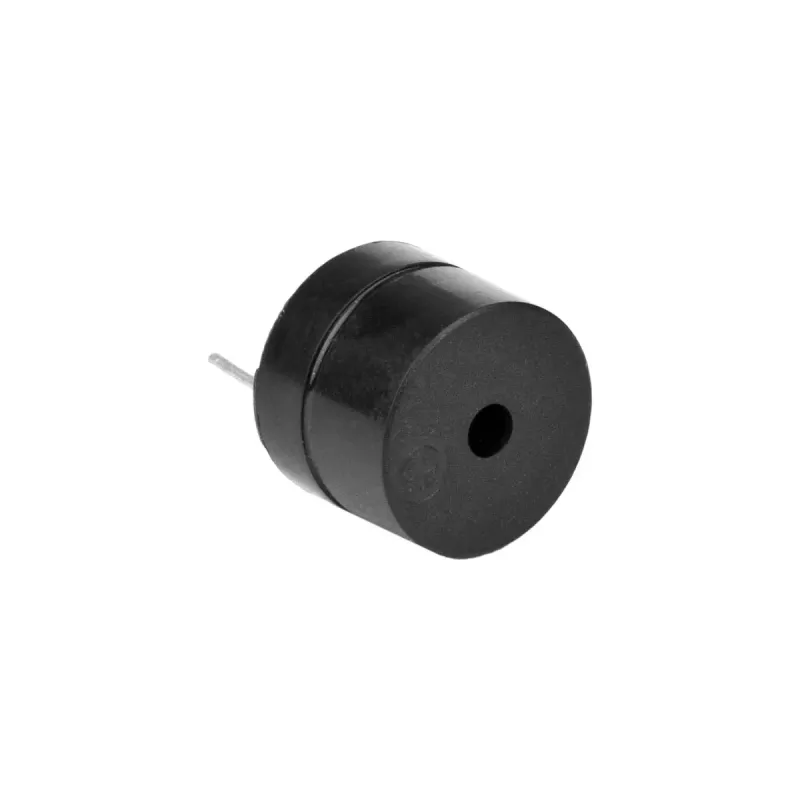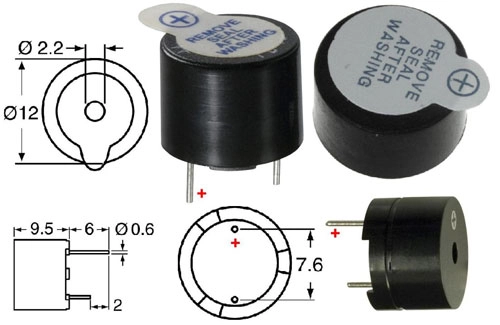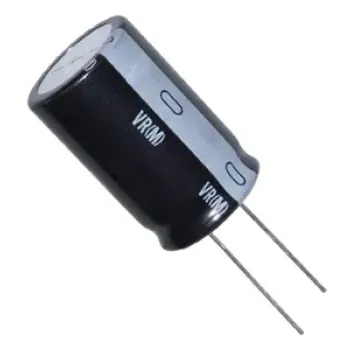
12mm 5-12V Passive Buzzer
Orders placed before 16:30 on weekdays are sent on the same day. Free shipping over 150 RON.
2.07ron
- Stock: In Stock
- Model: A0267.BUZZ5/12V-P
5-12V Passive Buzzer (12mm)
The 5-12V Passive Buzzer is a sound-producing device that does not have an in-built oscillating circuit. This means it requires an external signal, such as an AC (alternating current) or a PWM (pulse-width modulation) signal from a microcontroller or another external circuit, to generate sound.
🔑 Key Features
- No Built-in Oscillator: Unlike active buzzers, passive buzzers need an external oscillating signal to create sound.
- Operating Voltage: These buzzers typically function at low DC voltages, usually between 5V and 12V.
- Versatile Sound Generation: Capable of producing a broad range of frequencies and tones based on the input signal.
- Flexible Control: The input signal can be modulated to create various sounds, melodies, and frequencies.
📐 Technical Specifications
- Dimensions: Available in various sizes, often similar to active buzzers, such as 12mm or 9mm in diameter.
- Sound Level: Typically produces sound levels between 70 to 85 dB, but this can vary based on the input signal.
- Frequency Range: Can generate a wide range of frequencies, typically between 1kHz and 5kHz, depending on the input.
- Current Consumption: Usually low, around 10-30 mA, but can vary based on the input signal characteristics.

🔧 Applications
- Electronic Projects: Commonly used in Arduino and other microcontroller projects for specific tones or melodies.
- Alarm Systems: Used in security and alarm systems to generate various alert sounds.
- Home Appliances: Employed in appliances like washing machines and microwaves to provide alert or status sounds.
- Toys and Games: Integrated into toys and electronic games to generate sound effects and music.
👍 Advantages
- Sound Customization: Can generate a wide range of sounds and tones by varying the input signal, allowing for complex sound generation.
- Cost-Effective: Generally inexpensive and widely available.
- Flexible Integration: Easily controlled by microcontrollers and other digital circuits to produce specific sound patterns.
👎 Disadvantages
- Requires External Circuitry: Needs an external oscillating signal, making the circuit design more complex compared to using an active buzzer.
- Dependent on Input Signal: Sound quality and volume can significantly vary based on the input signal's characteristics.
🔌 Example Connection
To use a passive buzzer with a microcontroller like an Arduino:
- Connect the positive terminal of the passive buzzer to a PWM-capable digital pin on the microcontroller.
- Connect the negative terminal to the ground (GND) of the microcontroller.
- Use the microcontroller to generate a PWM signal or oscillating signal to drive the buzzer.
📝 Example Code for Arduino
int buzzerPin = 9; // PWM-capable pin
void setup() {
pinMode(buzzerPin, OUTPUT);
}
void loop() {
tone(buzzerPin, 1000); // Generate 1kHz tone
delay(1000); // Wait for 1 second
noTone(buzzerPin); // Stop the tone
delay(1000); // Wait for 1 second
}
This simple code generates a 1kHz tone for 1 second, followed by a 1-second silence, repeating indefinitely.
Your orders placed before 16:30 on weekdays are dispatched the same day.





